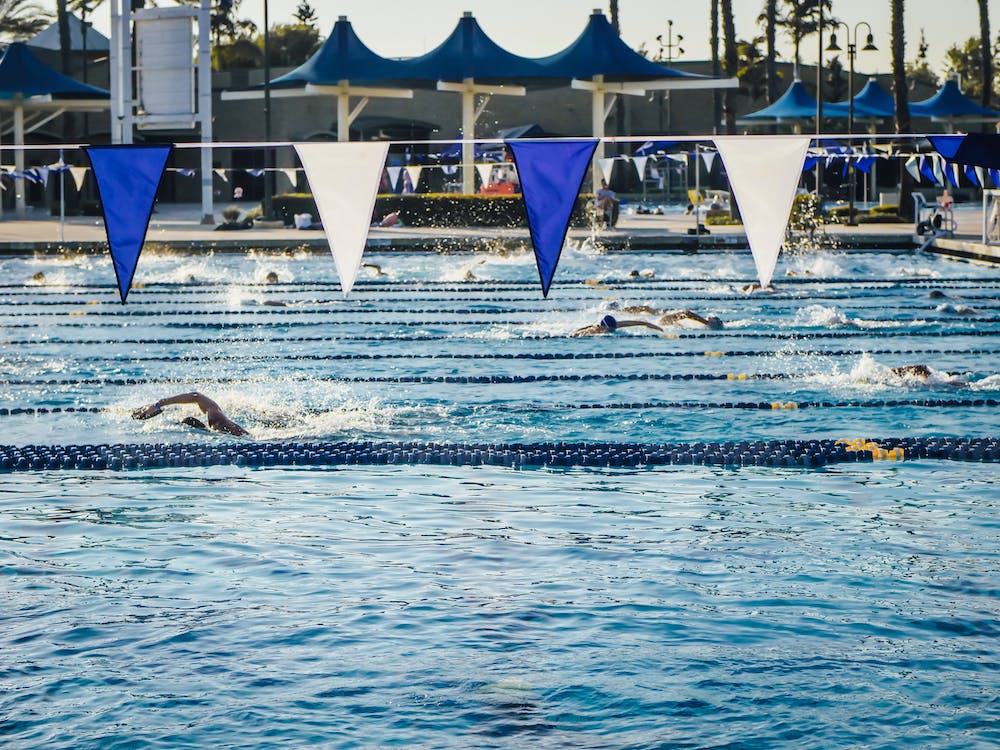If you have taken a break from swimming and are looking to get back into the water, you’ve come to the right place.
Swimming is a fantastic way to stay fit, improve your cardiovascular health, and enjoy the water. Whether you took time off due to injury, a busy schedule, or simply lost motivation, to get started swimming again can feel challenging.

This article will guide you through the process of getting back in the pool and help you rediscover the joy of swimming.
Why You Should Start Swimming Again
Swimming offers numerous benefits for both your physical and mental well-being. It is a low-impact exercise that puts minimal stress on your joints, making it suitable for people of all ages and fitness levels.
Regular swimming can improve your cardiovascular endurance, strengthen your muscles, and increase your flexibility. Additionally, swimming is known to reduce stress, boost mood, and improve sleep quality.
So, if you’re looking for a fun and effective way to get in shape and improve your overall health, diving back into swimming is a great choice.
How to Start Swimming Again After a Long Break
1. Overcoming mental barriers to getting back in the water
After a long break, it’s common to feel anxious or uncertain about returning to the pool. However, the first step is to overcome these mental barriers. Remind yourself of the joy and satisfaction swimming brought you in the past.

Visualize yourself swimming through the water and feeling the weightlessness. Start by setting small goals and gradually building up your confidence.
2. Assessing your current swimming abilities
Before jumping into the deep end, it’s important to assess your current swimming abilities. Take some time to swim a few laps and see how comfortable you feel in the water.
Pay attention to your endurance, stroke technique, and breathing patterns. This self-assessment will help you understand where you currently stand and what areas you need to focus on.
3. Setting realistic goals for returning to swimming
When getting back into swimming, it’s crucial to set realistic goals.
Start by defining what you want to achieve, whether it’s swimming a certain distance, improving your speed, or simply enjoying the water.
Break down your goals into smaller milestones and create a timeline to track your progress. Remember, the key is to start small and gradually work your way up.
4. Finding a suitable swimming facility or club
Next, find a suitable swimming facility or club that meets your needs.
Consider factors such as location, pool size, availability of coaching or instruction, and any specific requirements you may have.

Joining a swimming club or finding a community of swimmers can provide you with the support and motivation you need to stay committed.
READ ALSO: How to Conquer Swimming 100 Yards Like a Pro
5. Planning your swimming workouts
Once you have access to a swimming facility, it’s time to plan your workouts. Start by setting a regular schedule that works for you. Aim for at least two to three sessions per week to build consistency.
Plan your workouts in advance, focusing on different aspects such as endurance, technique, and speed. Incorporate a variety of swimming drills and exercises to keep your workouts engaging and challenging.
6. Gradually increase your swimming intensity and duration
As you regain your swimming fitness, it’s important to gradually increase the intensity and duration of your workouts. Push yourself to swim a little faster or for a longer distance each time.
However, be mindful of not overexerting yourself too quickly, as this can lead to injury or burnout. Listen to your body and progress at a pace that feels comfortable and sustainable.
7. Incorporating cross-training exercises for swimming fitness
To complement your swimming workouts, consider incorporating cross-training exercises that target the muscles used in swimming.
Activities such as yoga, Pilates, strength training, and core exercises can help improve your overall swimming fitness.

These exercises will not only enhance your performance in the water but also prevent imbalances and reduce the risk of injury.
8. Listening to your body and avoiding overexertion
While it’s important to challenge yourself, it’s equally important to listen to your body and avoid overexertion. Pay attention to any signs of fatigue, pain, or discomfort.
If you need to take a break or modify your workouts, don’t hesitate to do so.
Remember, consistency is key, and taking care of your body will ensure long-term progress and enjoyment.
READ ALSO: Does Swimming Increase Height?
9. Staying motivated and consistent with your swimming routine
Maintaining motivation and consistency is crucial when returning to swimming after a long break. Find ways to keep yourself motivated, whether it’s setting new goals, tracking your progress, or swimming with a friend.
Mix up your workouts to keep them interesting and enjoyable.
Celebrate your achievements along the way to stay motivated and remind yourself of how far you’ve come.
10. Seeking guidance from a swimming coach or instructor
If you feel like you need additional guidance or support, consider seeking help from a swimming coach or instructor. They can provide valuable feedback on your technique, help you set realistic goals, and create a personalized training plan.
Working with a professional can accelerate your progress and ensure you’re getting the most out of your swimming workouts.
11. Celebrating milestones and progress in your swimming journey
Finally, don’t forget to celebrate your milestones and progress in your swimming journey. Whether it’s mastering a new stroke, swimming a longer distance, or improving your personal best, each achievement is worth acknowledging.

Treat yourself to small rewards or share your accomplishments with friends and family. Celebrating these milestones will fuel your motivation and inspire you to keep pushing forward.
READ ALSO: 7 Swimming Techniques That Will Save Your Life
Conclusion
Getting started with swimming again after a long break may seem daunting, but with the right mindset and approach, it can be an incredibly rewarding experience.
Overcome your mental barriers, set realistic goals, find a suitable facility, and plan your workouts.
Gradually increase your intensity, incorporate cross-training exercises, and listen to your body.
Stay motivated, seek guidance if needed, and celebrate your progress.
By following these steps, you’ll soon find yourself back in the water, enjoying the many benefits that swimming has to offer.
Subscribe to our newsletter if you want to read more answers to difficult sports questions and receive regular tips and advice to enhance your athletic journey.
Subscribe to our newsletter!
Stay connected and keep pushing your limits!